The best breeds of cats for allergies
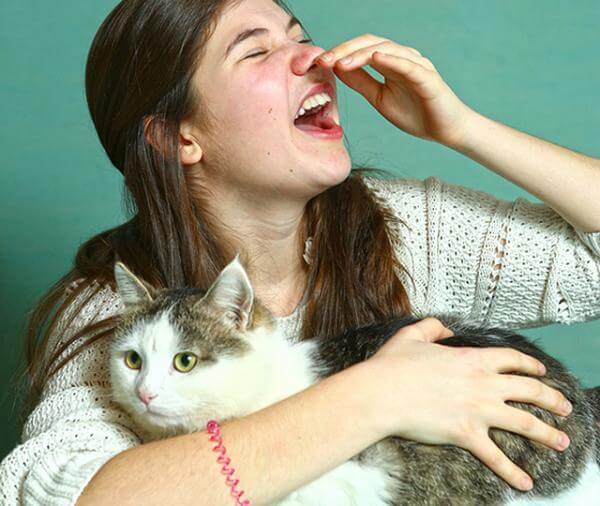
Approximately around 30% of the population suffers allergy to cats and dogs, the first option being much more common than the second. However, the fact of being allergic to one or several animals does not mean that the body of the affected person reacts as a result of the presence of the feline, dog, etc., but by the proteins found in the urine, Dandruff or saliva from animals, called allergens.
The 80% of those allergic to cats are allergic to Fel D1 protein, produced in the saliva, skin and some organs of the animal. In this way, and despite the erroneous belief of many, it is not the feline’s hair that causes the allergy, although the allergen can accumulate in the allergen after the self-massage. Also, if you are part of the aforementioned 30% but you love these furry companions and would love to be able to live with one, you should know that there is a series of cat breeds for allergy sufferers that produce a smaller amount of the allergen, as well as a series of very effective techniques to avoid allergic reactions. Keep reading this article and discover all our tips.
Hypoallergenic cats
Constant sneezing, nasal congestion, irritation in the eyes, does it sound? These are the main symptoms of cat allergy suffered by affected people after contact with the feline. However, as discussed above, the cause of the immune response is not the animal’s hair, but the Fel D1 protein. This protein can accumulate in the coat of the cat after autoasearse and, even, distributed through the home by dead hair fallen. Likewise, the feline expels this protein through urine, so manipulating its litter box can also produce an allergic reaction. Therefore, reducing the allergic reaction is possible following a series of guidelines that will be detailed later, as well as choosing a hypoallergenic cat.
What are hypolaergenic cats?
The hypoallergenic cats 100% do not exist. That a feline is considered to be hypoallergenic does not mean that it does not provoke any allergic reaction, it means that produces a smaller amount of Fel D1 protein or the characteristics of his hair makes him distribute a smaller amount of it and, therefore, reduces the immune response. However, it is not a definitive theory, since each body is different and it can happen that a hypoallergenic breed of cats does not arouse any reaction in one allergic person, but in another. So, it is possible that one of the cats affects you more than others and, therefore, it will not be enough to review our list, but you should be very aware of our final recommendations.
Other factors to consider
In addition to reviewing the breed of the animal, or its bloodline in case of looking for a mestizo feline, we can take into account the following factors that reduce the production of the allergen:
- Since the production of the protein Fel D1 is carried out by stimulating a series of hormones, testosterone being one of the main stimulants, castrated male cats They generate a smaller amount of this allergen because their testosterone levels are significantly reduced.
- Another of the main stimulants of this protein is progesterone, a hormone produced by the cat during the period of ovulation and gestation. So, the castrated cats their amount of Fel D1 is also reduced.
Siberian cat, the most recommended
Although the Siberian is characterized by a dense and long coat, which can lead us to think that it is more likely to accumulate more allergens, the fact is that it is considered to be the most suitable cat for allergic. This is because it is the feline race that produces the least amount of Fel D1 protein. However, as we discussed in the previous section, adopting a Siberian cat does not guarantee 100% that the allergic reactions will disappear, since the reduced amount of the allergen that it produces can be perfectly tolerated by some allergic, and rejected by others.
In addition to being a beautiful feline, the Siberian cat is affectionate, docile and loyal, who loves to spend long hours with his human companions and play. Of course, due to the characteristics of his coat, it will be advisable to brush his coat frequently to avoid the formation of knots and tangles.
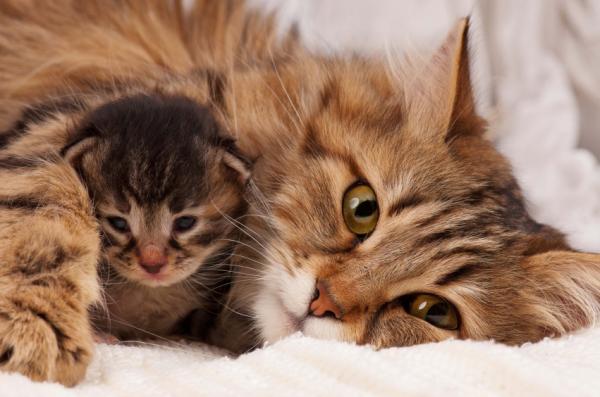
Balinese cat
As with the Siberian, despite having a long coat, the Balinese cat also produces less Fel D1 that the rest of breeds of cats that we show next and, therefore, can be reduced the allergic reaction. Also known as the long-haired Siamese, it does not require great care in terms of maintaining your hair, except for two to three brushes a week to avoid the formation of tangles and knots. Likewise, its friendly, playful and faithful nature, make it the perfect companion for those who wish to spend long hours with their feline, since the Balinese does not usually endure to be alone at home or share the company of their human.
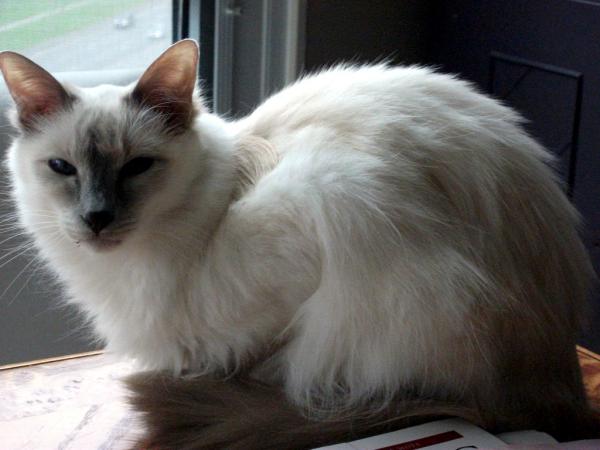
Bengali cat
Considered one of the most beautiful felines by its wild aspect and intense look, the Bengali is another of the best breeds of cats for allergies For the same reason as the previous ones, their levels of the protein causing the allergy are lower.
Besides having an extraordinary beauty, the Bengali is a very curious, playful and active cat. If you are not willing to dedicate hours of play to your furry companion, or you are looking for a more independent feline, we recommend you keep looking because the Bengal cat needs to live with a person who can cover all their needs and daily activity dose. Likewise, although it is a feline that does not usually present health problems, it does need to receive an adequate maintenance of its ears because it tends to produce a greater amount of cerumen.
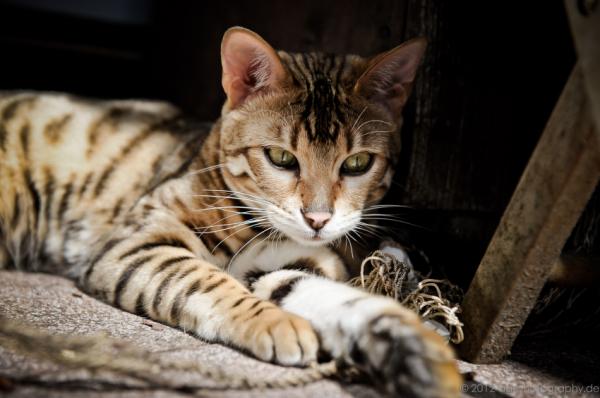
Cat devon rex
Although many tend to think that devon rex is part of the list of cats for allergies to have a shorter coat than the rest, it should be noted that it was not the hair that caused the allergy to cats, but the protein Fel D1 and, like the previous ones, it is in the list for producing a smaller amount of it. In parallel, the devon rex is one of the cats that less loose hair, so the small amount of the allergen that can accumulate in it is less likely to be distributed by the home.
Affectionate and very affectionate, the devon rex does not tolerate spending many hours at home, so it requires the frequent company of his human to be a happy cat. Likewise, their ears are more prone to the excessive production of cerumen than those of other feline breeds and, therefore, need more attention.
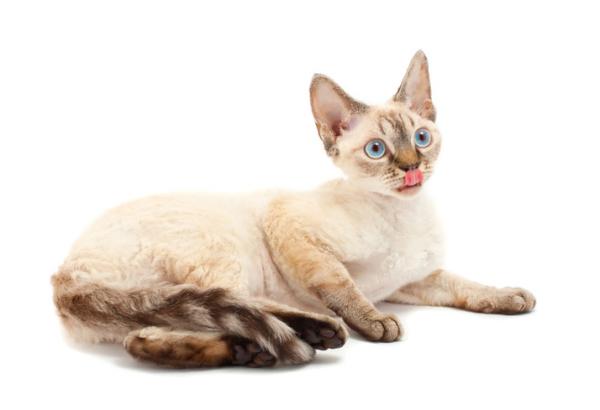
Javanese cat
The Javanese cat, also known as oriental long hair, is another of the cats that produce a smaller amount of allergens. Unlike the Bengali cat and the devon rex, the Javanese is a more independent cat and does not require the frequent company of its human. In this way, it is a breed of cats for allergic ideal, too, for people who, due to work, or others, need to spend a few hours outside the home but want to share their life with a feline. Of course, it is essential to remember that in no case is it recommended to leave the animal over 12 hours alone at home.
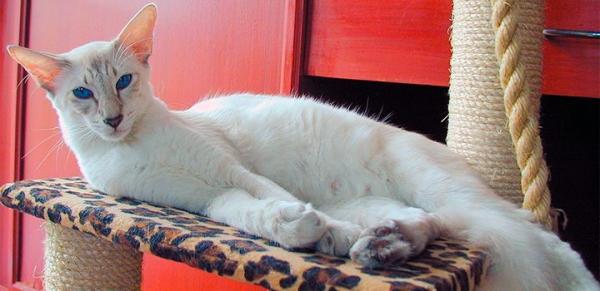
Oriental Shorthair cat
With this cat happens exactly the same as with the previous one, since the only difference between them is the length of his coat. In this way, the oriental cat with short hair is also part of the list of cats for allergies to produce less amount of allergens. However, it is always recommended Perform periodic brushing to keep the fall of dead hair at bay and, therefore, the diffusion of the protein.
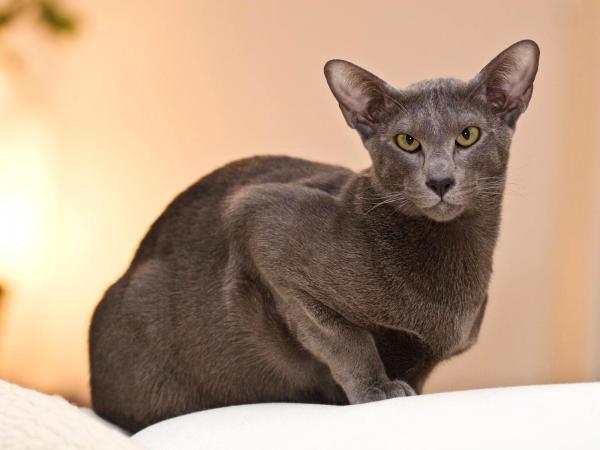
Russian blue cat
Thanks to the thick double layer cloak This feline presents, the Russian blue cat has been considered as one of the best cats for allergies not only to produce less allergens, but also to keep them closer to their skin and less human contact. In this way, in addition to secreting a smaller amount of the protein Fel D1, we could say that it practically does not distribute it at home.
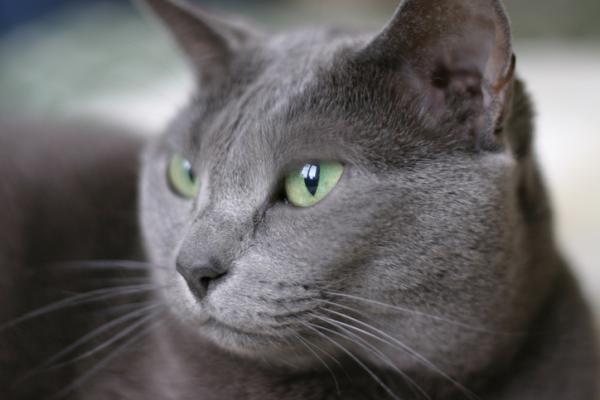
Cornish rex, LaPerm and Siamese
Both the Cornish Rex and the Siamese cat and LaPerm are not felines that produce a smaller amount of the Fel D1 protein, but they do they expel less hair than other breeds of cats and, therefore, have also been considered hypoallergenic. Remember that although the main cause of the allergy is not the hair itself, the allergen accumulates in the mantle of the animal and its skin, distributed through the home when it is lost or in the form of dandruff. Therefore, felines with thicker or curly fur like these are less likely to spread the protein. For these cases, before proceeding to adopt one of these cats for allergies, we recommend make a first contact and observe if an allergic reaction occurs or not. If, after a few hours, nothing happens, or the reactions are so mild that the person in question considers that they can tolerate them, the adoption can be finalized.
It is very important to be completely sure that the cat that is going to receive is the right one, since a mistake can not only mean the loss of a companion for the allergic person, but it can have very serious emotional consequences for the animal . Likewise, for people with a very severe allergy to cats, we do not recommend opting for these cats.

Cat sphynx, appearances deceive.
No, despite being on this list the sphynx is not a cat suitable for allergy sufferers. So, why do we highlight it? Very simple, because due to their absence of hair are many people with allergies to cats who believe they can adopt a sphinx and not suffer the consequences, and nothing is further from reality. Remember that the cause of the allergy is not the hair, it is the Fel D1 protein that is produced in the skin and saliva, mainly, and the sphynx does generate the normal amount that can develop an allergic reaction. However, as we have mentioned in previous sections, this does not mean that there are not people who are allergic to cats that tolerate this cat, but they will probably be a minority.

Tips to live with a cat if you have allergies
And if you already live with a cat that causes allergies but you would like to know some techniques to reduce the immune response of your body, do not worry! Although it is not the ideal situation, you should know that you can minimize allergic reactions following our advice. Also, these recommendations are also suitable even if you are thinking of adopting one of the hypoallergenic cats:
- Keep the door of your bedroom closed. You should prevent as far as possible that your furry companion enters your room to prevent distribution of allergen in each corner and thus produce an allergic reaction during the night.
- Get rid of the carpets and similar elements of the home, since they usually accumulate a large amount of cat hair. Remember that, although hair is not the cause, the feline can transfer protein Fel D1 to the fur through the saliva, and this fall on the carpets.
- Make sure that another person brushes your cat frequently to avoid losing a lot of hair and, therefore, distribute the allergen at home.
- Since cats expel protein through urine, your litter box should always be clean and, above all, avoid being the one who manipulates it.
- Remember that castrated cats produce a smaller amount of the allergen, so if yours has not yet undergone this operation, do not hesitate and talk to your veterinarian.
- Finally, if none of the above works, keep in mind that there are medications that can significantly reduce allergic reactions. Go to your doctor for advice.
If you want to read more articles similar to The best breeds of cats for allergies, we recommend that you enter in our section of Ideal for.


